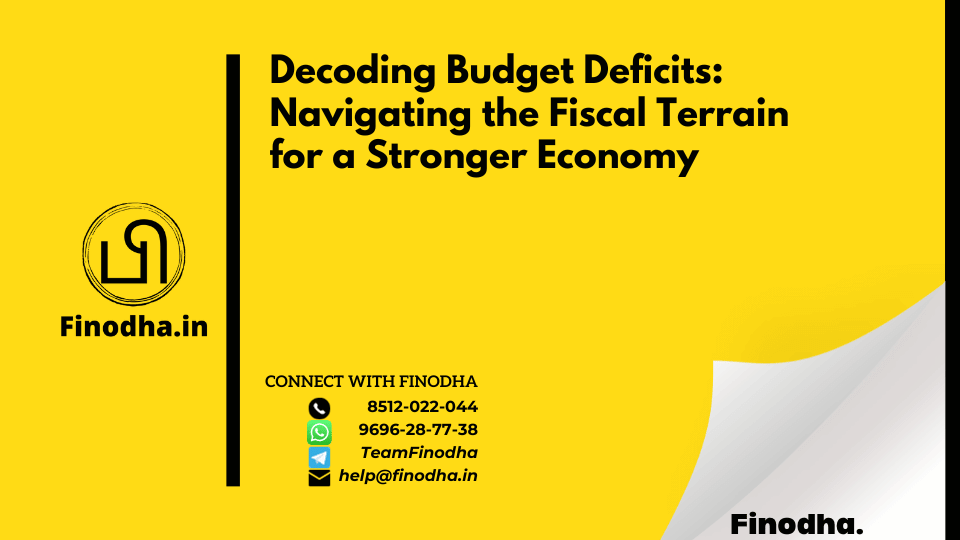Important Keywords: budget deficit, fiscal deficit, revenue deficit, primary deficit, economic growth, inflation, national debt, India’s financial health.
Table of Contents
Introduction: Budget Deficit Deciphered: Unraveling India’s Economic Health
Understanding the intricacies of a nation’s financial health is vital for every citizen. One of the key components that shape a country’s economic landscape is the budget deficit. In simple terms, a budget deficit occurs when a nation’s expenditures surpass its revenue, potentially impacting its fiscal stability. This article aims to demystify budget deficits, exploring their types, calculations, and the potential repercussions they pose to a nation like India.
The Advantages and Disadvantages of Budget Deficits
Budget deficits play a crucial role in a nation’s economic cycle, offering both advantages and disadvantages:
Advantages:
- Stimulating Economic Growth: A controlled budget deficit can stimulate economic growth by infusing funds into critical sectors like infrastructure, healthcare, and education, spurring employment and consumption.
- Investment in Development: Budget deficits allow governments to invest in long-term developmental projects that contribute to a better quality of life for citizens, fostering progress and prosperity.
Disadvantages:
- Inflationary Pressures: Prolonged or unchecked budget deficits can lead to inflationary pressures as governments resort to printing more money, increasing the general price levels of goods and services.
- Burgeoning Debt: Persistent deficits contribute to the national debt, which can become a burden, diverting funds from essential public services to debt servicing.
Types of Budget Deficits
There are three primary types of budget deficits, each with distinct characteristics and implications:
- Fiscal Deficit: This deficit arises when the government’s total expenditures exceed its total revenue, including both capital and revenue expenditures.
- Revenue Deficit: When the government’s total revenue falls short of covering its revenue expenditures, it results in a revenue deficit.
- Primary Deficit: The primary deficit occurs when the fiscal deficit is adjusted for the interest payments on past borrowings. It provides a clear picture of the government’s fiscal position, excluding debt servicing.
Calculating the Budget Deficit
Budget Deficit = Total Government Expenditures − Total Government Income
Total government income comprises revenue from corporate taxes, personal taxes, stamp duties, and more, while expenditures encompass defense, energy, science, healthcare, social security, and various other expenses.
A Relatable Example
Imagine India’s government invests in upgrading its healthcare infrastructure by building new hospitals and improving medical services across the country. These investments, funded through a calculated budget deficit, lead to enhanced healthcare accessibility, improved public health, and ultimately, a more productive and healthier workforce. However, if the deficit is mismanaged or excessive, it could result in high inflation, putting strain on the average citizen’s purchasing power.
Key Takeaways and Conclusion
Understanding budget deficits is essential for every citizen, as it directly impacts a nation’s economic stability and growth prospects. While a controlled deficit can spur development and economic growth, it’s crucial to manage it judiciously to prevent adverse consequences such as inflation and a burgeoning national debt.
In conclusion, informed financial decision-making and prudent fiscal policies can help India strike the right balance, ensuring sustainable economic growth and a prosperous future for all.
FORM GST ADT – 04: Information of Findings upon Special Audit

Your books of account and records for the F.Y.…………… has been examined by ————– (chartered accountant/cost accountant) and this Audit Report is prepared on the basis of information available / documents furnished by you and the findings/discrepancies are as under:
FORM GST ADT – 03: Communication to the registered person for conduct of special audit under section 66

And whereas it is felt necessary to get your books of account and records examined and audited by…………………………. (name), chartered accountant /cost accountant nominated by
FORM GST ADT – 02: Audit Report under section 65(6)

You are directed to discharge your statutory liabilities in this regard as per the provisions of the Act and the rules made thereunder, failing which proceedings as deemed fit may be initiated against you under the provisions of the Act.
Popular Tags:
Business and Profession Income (11) Capital gains (21) CGST (36) Chapter VI-A (15) compliance (10) Due date (10) e-Compliance Portal (21) E-Verify (20) economic growth (11) F&O Trading (29) F.No.354/117/2017-TRU (23) F. No. CBIC-20001/4/2024-GST (12) F. No. S-31011/25/2017-ST-I-DOR (12) financial stability (11) Financial statements (9) GST (1193) HUF (10) Income from Business & Profession (12) Income from House Property (17) Income Heads (16) Income Source (14) Income tax (109) Income Tax Account (15) Income Tax Compliance (12) Income Tax Filing (20) Income Tax Website (12) India (9) Indian context (22) Indian investors (15) investment decisions (9) IT Notice (10) ITR (10) ITR-2 (11) ITR-3 (19) ITR Form (20) P&L Statement (24) PAN (13) Risk Management (11) Salary Income (19) Section 7(1) UTGST Act 2017 (12) Section 8(1) UTGST Act 2017 (23) Section 21 UTGST Act 2017 (11) Speculative Income (14) Tax Audit (12) Trading Income (33)





0 Comments